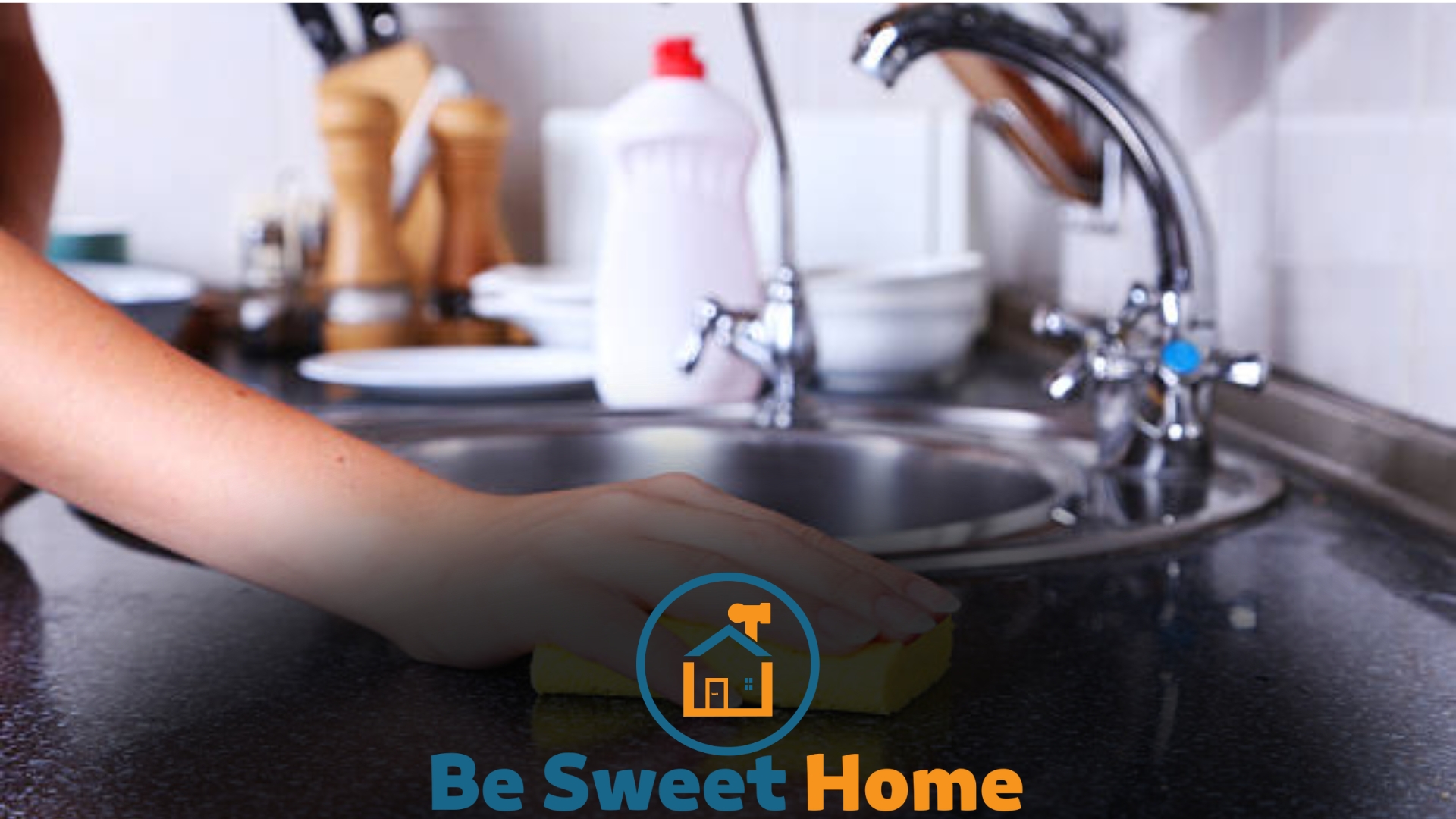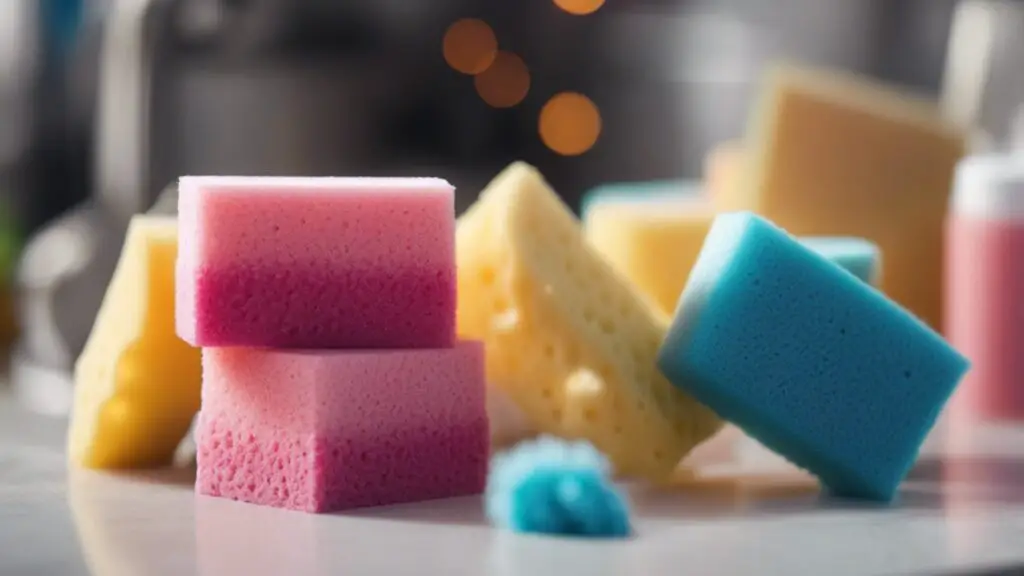

Replace kitchen sponges every 1-2 weeks to maintain hygiene. Bacteria can thrive in moist sponges, so regular replacement is crucial.
Kitchen sponges are notorious for being one of the germiest items in the home. They are used daily to clean dishes, wipe counters, and come in contact with food residue, creating the perfect environment for bacteria to grow. Consistent exposure to water and organic material turns them into breeding grounds for microbes.
It’s essential to keep your kitchen sanitary, and as part of this routine, giving attention to the state of your sponges is a must. Replacing sponges frequently helps prevent the spread of bacteria and ensures that your cleaning efforts are effective.
Keep an eye on your sponge’s condition and err on the side of caution by replacing it at the first sign of wear or persistent odor, ensuring that cleanliness in your kitchen remains a top priority.
The Dirty Truth: Kitchen Sponge Lifespan
Many households overlook a pivotal question: How often should you replace kitchen sponges? The answer lies within the unassuming corners of our kitchen sinks, where these sponges reside. Let’s uncover the truth about their lifespan and understand when to let them go.
Why Sponges Harbor Bacteria
Kitchen sponges are breeding grounds for bacteria. The reason is simple. They are often damp, warm, and filled with food particles – perfect for thriving germs. Frequent use doesn’t allow them to dry properly, which worsens the problem.
- Constant moisture enables bacteria to multiply quickly.
- Leftover food particles offer germs a food source.
- Infrequent cleaning gives bacteria time to establish colonies.
Signs Your Sponge Needs Replacing
A visual and olfactory assessment can reveal much about your sponge’s condition. Stay vigilant for these telltale signs:
| Sign | What to Look For |
|---|---|
| Smell | A musty or sour scent is a clear indicator. |
| Texture | Any disintegration or flimsiness suggests it’s time for a new one. |
| Stains | Persistent stains can mean it’s harboring microbes. |
Regular changes and proper maintenance ensure our sponges don’t become a hotbed for harmful microbes.
Swap them out frequently and dunk them in boiling water, or use a microwave to disinfect them between replacements.
Frequency Factors: When To Change Your Sponge
Understanding when to replace kitchen sponges is key to maintaining a hygienic kitchen. Sponges can become havens for bacteria if not changed regularly. The right time to switch sponges depends on various factors.
Type of Usage and Its Impact
The frequency of sponge replacement largely depends on how often and for what tasks it is used.
- Heavy-duty cleaning shortens sponge life.
- Light cleaning tasks extend sponge usage.
- Meat and fish residues warrant immediate replacement.
Material Differences Affecting Lifespan
Different materials mean sponges have varied lifespans.
| Material | Lifespan |
|---|---|
| Cellulose Sponges | 1-2 weeks |
| Synthetic Sponges | 2-4 weeks |
| Scrub Sponges | 3-4 weeks |
| Eco-friendly Sponges | 4-6 weeks |
Sanitization methods also impact how long a sponge can last before needing replacement.
Maximizing Sponge Usage
Keeping kitchen sponges clean can help them last longer. This means you won’t need to replace them as often. Discover how proper maintenance and sanitization can extend your sponge’s life.
Proper Maintenance Techniques
Effective sponge care keeps it away from dirt and grease. Follow these techniques to maintain your kitchen sponge:
- Rinse thoroughly after each use to remove food particles.
- Wring it out to reduce moisture that breeds bacteria.
- Store in a dry, well-ventilated area for proper air drying.
Sanitization Methods To Prolong Life
Alongside daily maintenance, regular sanitization is crucial. This helps kill bacteria and germs. Check out these easy methods:
| Method | Frequency | Description |
|---|---|---|
| Microwave | Every other day | Wet and microwave the sponge for 1 minute. |
| Dishwasher | With dishes | Place on the top rack during a heated dry cycle. |
| Bleach Solution | Weekly | Soak in a mixture of 1/4 cup of bleach to 1 gallon of water for 5 minutes. |
Switch between these methods weekly to keep your sponge in top shape.
Health Risks: The Consequences of Overused Sponges
Your kitchen sponge may seem harmless, but it can hide dangerous secrets. A sponge that’s used past its prime threatens your household’s health. Understand the health risks linked with overused sponges to keep your family safe.
Bacteria Build-up and Health Implications
Bacteria love damp sponges. Warmth and moisture create a perfect home for them. Sponges can quickly fill with millions of germs. These include E. coli and Salmonella, among others.
- E. coli can cause severe stomach pain.
- Salmonella may lead to food poisoning.
- Staph could result in skin infections.
Replace sponges every one to two weeks. Or when they start to smell. This keeps bacteria levels low.
Cross-contamination Concerns in Kitchens
Overused sponges can spread germs across your kitchen. This is called cross-contamination.
Here’s how it happens:
| Old Sponge Usage | Risks Involved |
|---|---|
| Wiping Counters | Spreads germs to surfaces |
| Cleaning Dishes | Transfers bacteria to utensils |
| Handling Food | Risks bacterial infection |
To avoid these risks, clean sponges daily. Use a diluted bleach solution or microwave them damp for two minutes. Get a new sponge regularly. This helps prevent cross-contamination.
Eco-friendly Choices: Sustainable Sponge Alternatives
Most kitchen sponges don’t last long. They can spread germs. Finding sustainable alternatives is key to a greener kitchen. Choose options that are kind to Earth. You’ll replace them less often. They work well and help the planet.
Biodegradable Options
Choose biodegradable sponges for a win-win situation. They break down after use. They do not harm the environment. Here are some you can use:
- Natural cellulose sponges: Made from wood pulp, soft and absorbent.
- Loofah sponges: Come from a plant, gently scrub without scratching.
- Coconut fiber scrubs: Tough on dirt, yet biodegradable. Use them for longer.
Reusable and Washable Kitchen Scrubbers
Reusable scrubbers can be a game changer. You can wash and reuse them many times. This reduces waste.
Here are options for reusable alternatives:
| Type of Scrubber | Material | Lifespan |
|---|---|---|
| Silicone Sponges | Flexible and durable silicone | Last for years |
| Copper Scrubbers | Metal, tough on grime | Use for several months |
| Microfiber Cloths | Soft fabric, grabs debris | Machine washable, long-lasting |
These scrubbers score high for durability and hygiene. Toss them in the washing machine. They will be clean and ready to scrub again!
Implementing a Sponge Replacement Routine
A sponge replacement routine is essential for maintaining a clean and hygienic kitchen. Sponges host many bacteria and can become a breeding ground for germs if not replaced regularly.
Therefore, setting up a schedule for sponge rotation and recognizing the signs of a necessary change is vital.
Let’s dive into how to keep your kitchen germ-free with an effective sponge management plan.
Creating a Schedule for Sponge Rotation
Consistency is key when it comes to sponge rotation. To ensure you’re never stuck with an overused sponge, mark your calendar for regular replacements.
Here’s a straightforward approach:
| Type of Use | Replacement Frequency |
|---|---|
| Heavy Duty (pots, pans) | Every 1-2 weeks |
| Light Cleaning (plates, cups) | Every 2-3 weeks |
| No-Contact Use (countertops) | Every 3-4 weeks |
- Set reminders on your phone or add notes to a wall calendar.
- Keep backup sponges in stock to never delay the rotation.
Signs That It’s Time for a New Sponge
Sometimes, sponges need replacing before the scheduled date.
Stay vigilant and look out for these clear indicators:
- Unpleasant Smell: A musty or sour odor is a strong sign of bacterial growth.
- Texture Change: Sponges that lose their firmness or start to crumble need to go.
- Discoloration: If your sponge turns a different color or develops stains, discard it.
- Residue Buildup: Visible food particles or grime means it’s time for a new sponge.
Always rinse sponges thoroughly after each use and let them dry completely. This extends a sponge’s life and delays the onset of these signs.

Frequently Asked Questions
How Often To Change Kitchen Sponges?
Kitchen sponges should be replaced every 1-2 weeks to maintain hygiene and prevent bacterial growth.
Can You Sanitize Kitchen Sponges?
Yes, kitchen sponges can be sanitized by microwaving damp sponges for 1-2 minutes or dunking them in a bleach solution.
Signs Sponge Needs Replacing?
Indicators to replace your sponge include a musty smell, discoloration, and a worn or frayed texture.
Are There Long-Lasting Sponge Alternatives?
Silicone sponges and scrubbers are durable alternatives that can last months and resist bacterial buildup.
Best Way To Store Kitchen Sponges?
Store kitchen sponges in a dry, ventilated area or a sponge holder to prolong their usability and prevent bacteria.
Conclusion
Regularly changing your kitchen sponge is essential for hygiene and safety. Aim to replace it every week or more often if heavily soiled. By staying proactive, you’ll keep your kitchen clean and reduce the risk of cross-contamination.
Keep an eye on your sponge’s condition and swap it out promptly to maintain a wholesome environment for food preparation.







